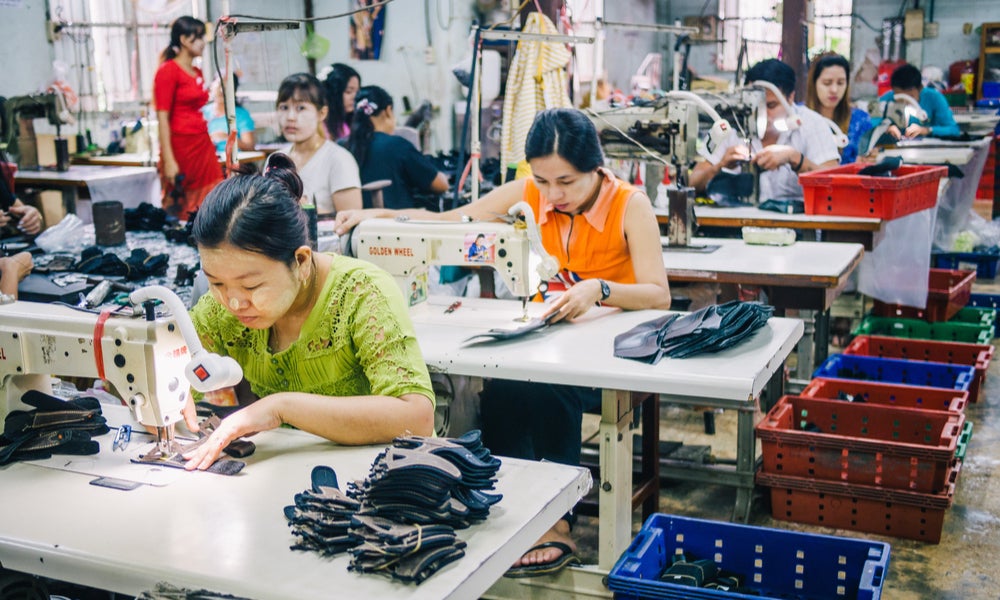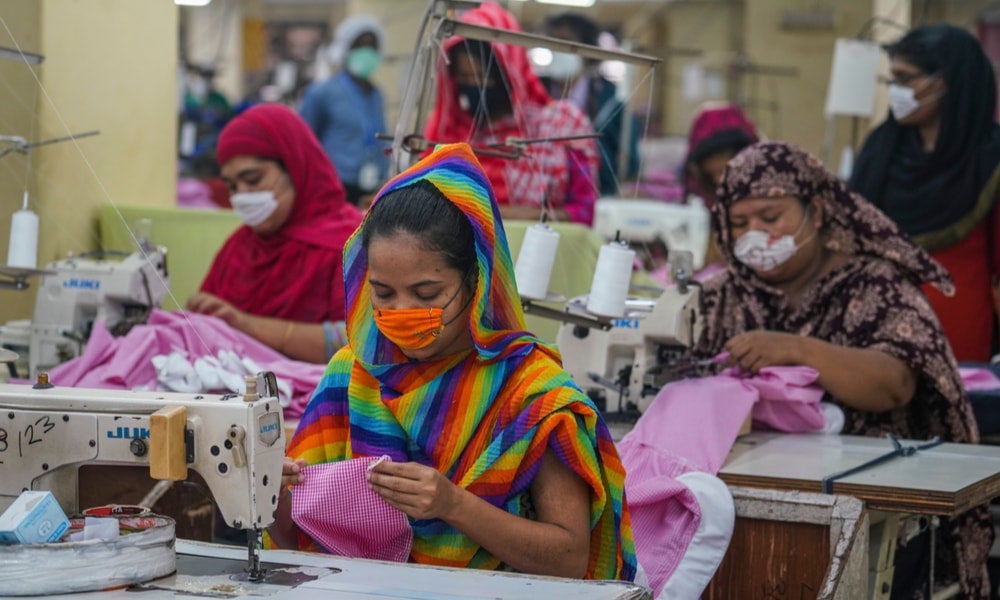Subcontracting and sweatshops: The wake-up call businesses need?
Businesses should not ignore the human cost of subcontracting cheap labour in the wake of the coronavirus pandemic, according to UNSW Business School
Coronavirus continues to impact the already struggling retail sector. Wesfarmers, one of Australia's largest listed companies and the owner of bargain retailers Kmart and Target, recently announced the closure of some 75 Target stores, with another 90 to be converted to the more profitable Kmart outlets. Fears remain for some 1000 Target workers whose jobs are at risk.
Beloved by many, Kmart recently sparked outrage for demanding a 30 per cent discount from suppliers in Bangladesh on some orders which have just been fulfilled. But coronavirus is also severely impacting Kmart's suppliers, who said they would not be able to afford it, so Kmart withdrew its request. However, the retailer has demanded that orders it put on hold during the worst of the pandemic be met by a new deadline. If the suppliers fail to meet this deadline, Kmart may cancel without liability.
It is no secret that suppliers in Bangladesh are a core part of Kmart's supply chain, where the retailer reportedly spends $180 million a year on manufacturing bargain goods for Australian shoppers. But for years, Kmart's low prices have come at a terrible cost. The Council of Textiles and Fashion Industries of Australia estimates that Australia imports more than 90 per cent of all clothes sold, and on average, just 4 per cent of the cost of one garment goes back into the hands of the people who made it. In Bangladesh, that figure can be as low as 2 per cent.

Kmart proudly says it is committed to paying suppliers the minimum wage of the sourcing country. Still, research has shown there is a big difference between a legal minimum wage and an adequate living wage needed to escape poverty. Kmart says it is working to "support the movement towards living wages" and that it will improve purchasing practices by 2023, but whether this is a time-bound commitment to actually pay suppliers' living wages is unclear. For now, many factory workers continue to make as little as 39 cents an hour.
Adverse health effects of sweatshops are well documented
The tragic human cost of companies placing profits before people is nothing new. Tragedies such as the Rana Plaza disaster in 2013, in which more than 1100 people died and thousands more were severely injured after their garment factory collapsed, are well known. "What is good for business is often portrayed as universally good for society, when there are sometimes far more losers than winners," explains UNSW Business School's Dr Sarah Gregson, Senior Lecturer in the School of Management.
With colleague Professor Michael Quinlan, Dr Gregson set out to find what we can learn from taking a historical look at the impact of sweatshops on public health. Their most recent research paper highlights the adverse health effects subcontracting can have on those who do the work, their families and their communities. Given the timeliness of their findings, their paper: Subcontracting and low pay kill: Lessons from the health and safety consequences of sweated labour in the garment industry, 1880-1920, was published by US journal Labor History.
"Historians have an important role to play in highlighting the lessons learned from the past to show that negative outcomes are often entirely foreseeable," explains Dr Gregson. "We already know that placing more links between the head firm and the workers who perform the labour is specifically designed to lower labour costs, reduce potential liabilities, evade regulatory standards and organised unions etc."

In their research, they argue that while disasters like Rana Plaza highlighted how major clothing retailers were using subcontracting networks and global supply chains to reduce costs and enhance their profits while disguising appalling labour conditions that are necessary for this outcome, this is nothing new. "Commentators [on Rana Plaza] routinely failed to acknowledge that these business practices – and their consequences for worker health and safety – were not new," they said.
In their research, Dr Gregson and Professor Quinlan document the adverse health effects associated with sweatshops that have ravaged entire communities during the 20th century. They found that subcontracting of clothing outwork contributed to the spread of communicable diseases like scarlet fever and tuberculosis – a public health risk – and worse, created incentives not to report disease outbreaks by landlords and others because it affected their income.
"Low and irregular earnings also impacted on households in terms of accommodation and living conditions (space, sanitation, ventilation, heating and hygiene), diet (quantity, nutritional value and safety), access to health care, and children's educational opportunities and performance," the paper states.
Businesses cannot isolate public health from work health
In the wake of the coronavirus pandemic, there is renewed urgency for companies and governments to reconsider the health impacts of cheap labour and the value of human life. This means businesses must stop isolating public health from work health, say Dr Gregson and Professor Quinlan.
"The combination of crowded, unsanitary and poorly ventilated and heated accommodation with fatigue and poor nutrition was conducive to the outbreak and rapid spread of infectious diseases like smallpox, typhoid, scarlet fever, cholera and tuberculosis," they said.

Worryingly, there is also a rising dispute over exactly how many garment workers in Bangladesh have tested positive with COVID-19: Industrial police have said that at least 60 garment workers tested positive since 26 April this year, while the trade unions say the figure is around 100.
“The real dangers of this have only become evident to many with the COVID-19 pandemic,” continues Dr Gregson. As their research has shown, workers who are precariously employed are more likely to 'soldier on' because they need the money, fear dismissal, and have little voice to express concerns about health and safety. All of these risks increase the likelihood that illness will spread.
"Without a degree of equality and connectedness, societies fracture and become highly vulnerable," adds Dr Gregson. "Our research highlights the wider dangers of labour market flexibility and why we should pay attention to the lessons of history in this regard."
Steps businesses and governments need to take
The challenge for the government is to regulate to protect workers from the diabolical effects of subcontracting, outsourcing and franchising, says Dr Gregson. What this means is that all businesses must fully account for the costs of production, including the degree to which they externalise health and safety costs onto workers, their families, society and government via the organisation of production.
"A worker who does regular 12-hour shifts might have an accident caused by fatigue, suffer both physical and psychosocial injuries, hurt other workers (also physically and/or psychosocially), spend a long period in hospital and require significant rehabilitation (tabs picked up by the taxpayer)," she explains.
"The current situation in the US is a tragic cautionary tale about the human cost of doing too little, too late," adds Dr Gregson, so there is a very urgent need for governments to regulate to protect workers from the effects of subcontracting and outsourcing.

With the health and economic impact of the coronavirus pandemic already weighing heavily on the world, there is an impetus for governments and businesses to act sooner rather than later. But what would this look like in practice? "Effective limits on the degree to which businesses can exploit the most vulnerable on the basis that many workers desperately need to take whatever job is offered them to support themselves, their families, their education, and their health," explains Dr Gregson.
Finally, she suggests three steps that businesses could take to encourage governments to act:
- Point to the long-term effects of insufficient funding of the health system
- Show how fragile are the economic and social supports for precariously employed workers and that the current level of Newstart is insufficient for any unemployed person
- Support the need to regulate work rather than employment, and provide sufficient resources to enforce regulatory reforms properly, so that all who labour are protected
For more information on the adverse effects of subcontracting, occupational health and safety and risk relating to work organisation, management and regulation, please contact UNSW Business School's Dr Sarah Gregson and Professor Michael Quinlan.
